Written by Vincent Reillon and Patryk Pawlak
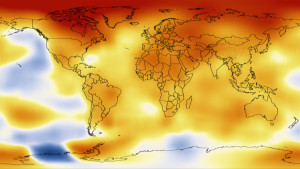
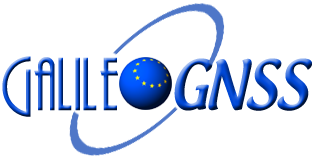
Written by Vincent Reillon and Patryk Pawlak

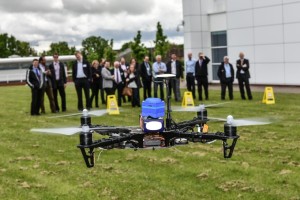
The ability to access the PRS via the cloud overcomes a major problem for some potential PRS users due to the security protocols that are required when managing the cryptographic keys needed to access the signals. Read more…
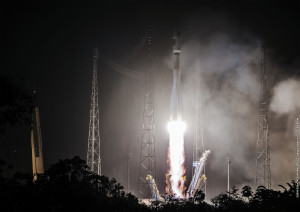
Galileos 13 and 14 lifted off together at 08:48 GMT (10:48 CEST, 05:48 local time) atop a Soyuz rocket from French Guiana.
This seventh Galileo launch went by the book: the first three Soyuz stages placed the satellites safely into low orbit, after which their Fregat upper stage hauled them the rest of the way into their target medium-altitude orbit. Read more…
Arianespace has successfully launched the 13th and 14th satellites of the Galileo constellation. The company’s second Soyuz launch of the year took place on May 24 at 5:48 am local time (10:48 UTC) from the Guiana Space Center (CSG) in Kourou, French Guiana.
Today’s Soyuz success marks the 250th launch from the Guiana Space Center with its family of launchers. This total, composed of 229 Ariane flights, 15 with Soyuz and six liftoffs of Vega, confirms Arianespace’s operational performance over time for the benefit of all its clients.
Liftoff is scheduled for Tuesday, May 24, 2016 at exactly:
05:48:43 a.m., Local time (French Guiana)
04:48:43 a.m., Washington, D.C.
08:48:43 a.m., UTC
10:48:43 a.m., Central European Time
11:48:43 p.m., Moscow
The 15th Soyuz launch from the Guiana Space Center (CSG) will place two new satellites for Europe’s Galileo satellites navigation System into circular orbit. The launcher will be carrying a total payload of 1,599 kg.
Countdown and flight
– 05H: Beginning of the meeting for launcher fueling authorization (BTR)
– 04H 30MN: Launch vehicle fueling begins
– 01H 35MN: End of fueling operations
– 01H 10MN: Mobile gantry withdrawal
– 00H 5MN 10S: Key on start
– 00H 5MN: Fregat transfer to onboard power supply
– 00H 2MN 25S: Upper composite umbilical drop-off command
– 00H 40S: Ground-onboard power transfer
– 00H 28S: Lower stage umbilical mast retraction
– 00H 16S: Ignition
– 00H 14S: Preliminary thrust level
– 00H 1S: Full thrust level
– 00:00: LIFTOFF
+ 00H 1MN 58S: Jettisoning of boosters
+ 00H 3MN 39S: Jettisoning of fairing
+ 00H 4MN 48S: Separation of central core (second stage)
+ 00H 9MN 24S: Separation of 3rd stage
+ 00H 10MN 24S: First Fregat burn
+ 00H 23MN 32S: Fregat shut down and beginning of ballistic phase
+ 03H 38MN 35S: Second Fregat burn
+ 03H 47MN 57S: Fregat shut down
+ 03H 47MN 57S: Galileo FOC-M5 SAT 13-14 separation (in Orbit Plane A)
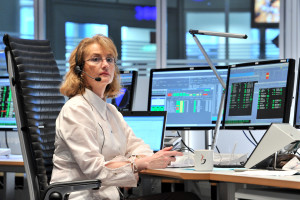
Ready to go to Space
With just hours to go before lift-off, the Mission Control Team at ESOC holds the final pre-launch briefing to review (one more time!) every detail of the mission plan.
At the briefing, team leaders and functional experts from the Mission Control Team are joined by the satellite’s Project Team from ESTEC as well as representatives from the launch service provider (in addition to the Agency’s own Spaceport at Kourou, ESA launches some satellites using commercial providers) and from the industrial contractor that built the satellite. Read more…
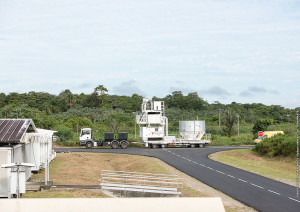
Arianespace’s new Spaceport processing facility has fueled another Fregat stage. This upper stage for the medium-lift Soyuz launcher will be used for the May 24 flight from French Guiana with two European Galileo navigation satellites.
Named the FCube (Fregat Fueling Facility), the purpose-built installation is utilized to “top off” Fregat upper stages during Soyuz launch campaigns at the Spaceport. In service since last year, the FCube supports Arianespace’s sustained launch pace, giving the company greater flexibility in managing its mission manifest, while also increasing launch capacity with Soyuz and its other launch vehicle family members: the heavy-lift Ariane 5 and lightweight Vega. Read more…